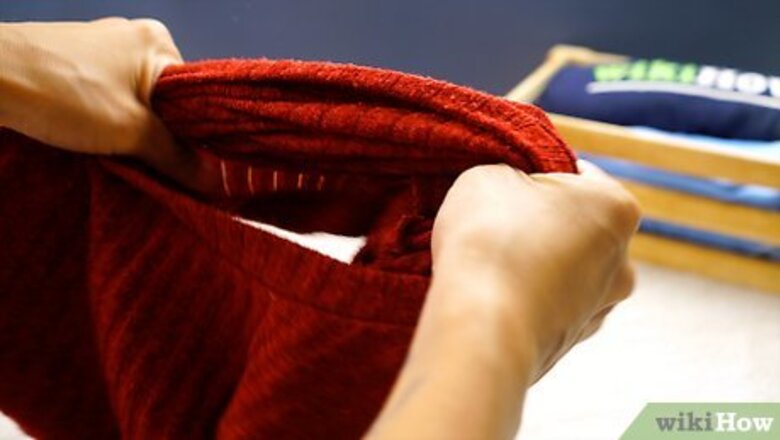
views
Flip your clothes inside out when you wash them.
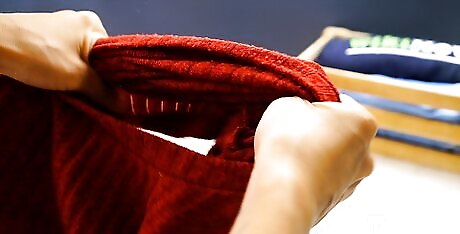
It can protect your clothes from lint and reduce shedding. Take all of your shirts, socks, pants, sweatshirts, and anything else you’re washing and flip them inside out. Add them to your washing machine inside-out so they won’t lose as many of their fibers, which can form lint, and so any lint that forms in the wash is less likely to stick to them somewhere noticeable.
Check your pockets for tissue and paper.
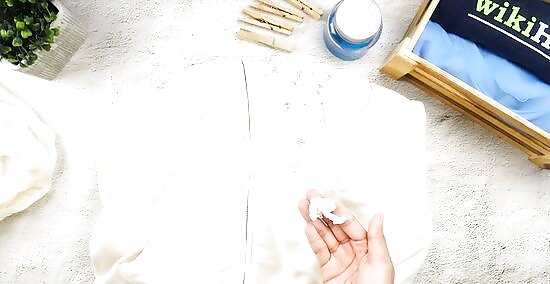
They can shred when you wash them and get everywhere. Reach into the pockets of any pants, shirts, or sweatshirts you’re washing. Pull out anything you find, especially stuff that can break down and form lint like napkins, tissues, and paper. It’s always a good idea to check your pockets before you wash your clothes. You don’t want anything damaged or soaked!
Use the recommended amount of detergent.
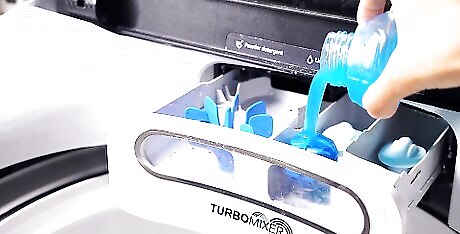
Check the packaging of the laundry detergent you’re using. It’ll say how much you need to use depending on how full your machine is. It’ll also have measurements for how much to use depending on the hardness of your water. Add the recommended amount to properly wash your clothes and help prevent lint. If you don’t have enough detergent, it can cause lint particles to get deposited on your clothes. If you have too much, it can leave behind a grimy residue.
Add 1 cup (240 mL) of white vinegar to the load.
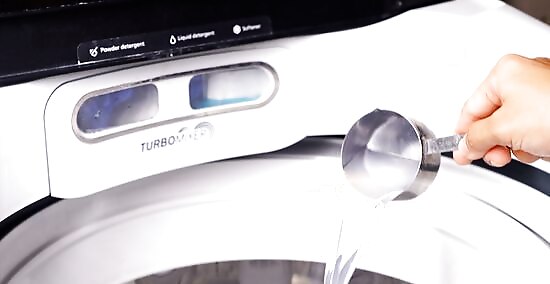
It can help fight against lint in your washing machine. Use distilled white vinegar so there isn’t a super strong odor in your clothes. Add it during the final rinse cycle and it’ll help prevent fuzzy lint from getting onto your clothes.
Hang your clothes to dry if you can.

Let your clothes dry naturally to help prevent lint. As clothes tumble in a dryer, the fibers can break loose and collect to form lint. One simple way to solve the problem is to hang your clothes up on a clothesline or a drying rack. It may take longer, but it can seriously cut down on lint. You can hang your clothes to dry somewhere with good airflow and circulation to help them dry more quickly.
Machine-dry your clothes with a fabric softener sheet.

It’ll help remove the lint while your clothes dry. Transfer your clothes from your washing machine to your dryer as soon as they’re done washing. Toss a fabric softener sheet into the dryer and turn it on. The sheet will help keep your clothes soft, add a nice scent, and help prevent lint from collecting on them. You could also use an unscented fabric softener sheet if you don’t want an extra scent.
Toss a microfiber square in the dryer instead of a dryer sheet.
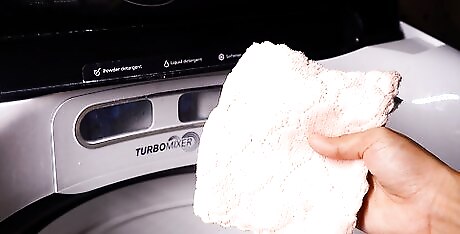
It’ll collect the fuzz and keep it off your clothes. Microfiber squares naturally attract lint. Add one into the dryer along with your clothes and any lint that’s in there will stick to the square instead of your clothes. You can find microfiber squares at your local department or home goods store. You can also order them online.
Wash items with a lot of lint separately.

Separating your clothes can help keep lint from sticking to them. If you’re machine-washing your clothes, separate lint-producing items like towels, chenille, sweatshirts, fleece, felt, and sweaters. Wash them separately from items that naturally collect lint more easily such as synthetic fibers, corduroy, and knits. If you have brand new clothing items, wash them separately as well because they’re more likely to have fibers that can break off and form lint.
Clear the lint filter of your dryer after each use.
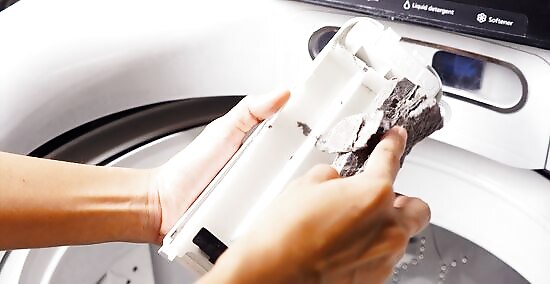
It’ll keep it from building up and getting onto your clothes. Dryers have a filter that is designed to catch any lint in the machine. Slide it out, clean off any lint that’s on it, and then slide it back into place and you’re good to go! The lint filter is usually located either in the front or on top of the dryer.
Clean your washing machine once every 2 months.

Run an empty cycle with detergent or vinegar to remove buildup. Lint can collect and be deposited on the inside of your washing machine and in the internal filters. Run a normal cycle using detergent with any clothes inside. Another option is to use 2 cups (470 mL) of distilled white vinegar instead of detergent when you run an empty cycle.
Hand-wash your clothes for the best protection.
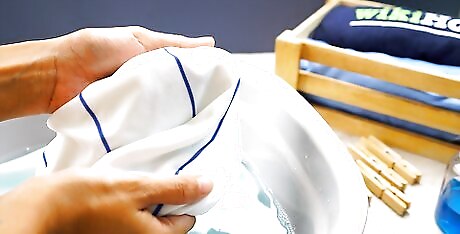
It’ll help prevent fibers from breaking off and forming lint. If you’re able to do it, washing your clothes by hand is by far the best way to prevent lint from getting onto your clothes. Fill a small tub or sink with water and add about 1 teaspoon (4.9 mL) of detergent. Submerge your clothes in the water and gently swish them through the soapy water. Then, drain the water and fill it with cool, clean water to rinse the clothes. You may need to rinse the clothes more than once to fully remove the soap. Hand-washing can be much more time-consuming, but it’ll help prevent lint!

















Comments
0 comment